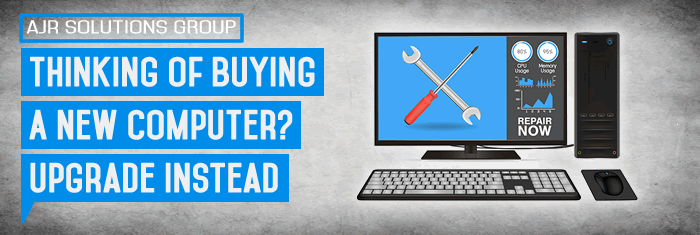With the news that Apple will be releasing two completely new computer lines, as reported by The Independent, many computer users will be pondering over whether or not they should upgrade. For most computer users, an upgrade will always be effective, given the fast rate that computer technology advances at. Computer repair is always an option and having an expert look over your device can bring great improvements. However, savvy computer users should consider whether they can pick specific upgrades and make improvements at home, rather than overspending on a whole new computer setup. Installation is often streightforward for tech-minded people, and even if things do go wrong, professionals are there to help.

Fine-tuning your hardware
The most reliable way to improve your computer’s performance is, of course, through the hardware, and with laptops and PCs it’s often easy to make improvements. The most accessible ways to make upgrades are through the random access memory (RAM), graphics card (GPU) and storage. RAM is fairly straightforward to understand; more is better, though, for most users except video editors, 16GB will be more than enough. It’s also straightforward to install for the tech-savvy person, both on laptops and in PCs – just ensure that you pick up RAM with the correct form factor, as laptops will, predictably, use smaller cards.
Upgrading your graphics card will improve the performance of your computer in terms of graphical output, but also processing – video and photo editing often demand a powerful GPU, as does cryptocurrency mining. There is an added benefit with upgrading your GPU as prices are set to drop, according to consumer affairs website Trusted Reviews, following the inflation due to bitcoin use of powerful graphics cards. This means some of the best cards for efficiently improving graphical performance, including the Nvidia GTX 1080 Ti and AMD RX580, are coming down in price. If you’re willing to shop around and look at the specific properties of each manufacturer’s version, you’re likely to find a bargain. Manufacturers will also prioritise different graphics card attributes. For instance, ASUS Rog products typically come overclocked and supercharged, whereas Gigabyte products give users the option to perform their own tweaks.
Your storage system
Storage is the other area where you can make huge improvements. Hard disk drives are slowly being phased out and replaced with the smaller, quieter, and much, much quicker solid state drive (SSD). These have been expensive for many years, but SSDs are now becoming more affordable, including those released by recognised brands like Samsung and SanDisk. A hard drive is straightforward to replace, but an SSD may require some screwing to install a mount; many older computers and laptops are equipped for hard drives, which are typically an inch larger than SSDs.
When you can’t upgrade
Some PCs and laptops have features to prevent users from altering them. This includes fused bolts which require proprietary tools to loosen, meaning only registered dealers can make hardware changes. Not only does this create a physical barrier, but user warranty is often voided by breaking these safeguards. When this happens, you can make simple adjustments to the PCs software to make things smoother.
Scanning for viruses and malware is a great start. Secondly, checking for new drivers and updates can resolve hidden problems. From there, check what services are running when your computer starts and disabling unnecessary ones can improve boot times. Removing excess software and manufacturer ‘bloatware’ – useless programs that you never use – will also help things along.
If you’re thinking of purchasing a new system, stop and think. Can you upgrade? It’s easy, and affordable, to make small changes that will benefit your system. Pair this with basic housekeeping of your running PC environment and you could have your device feeling brand new.
If you want some friendly advice and would like a professional to take care of your computer upgrades you can always contact AJR and pop your computer into us.


